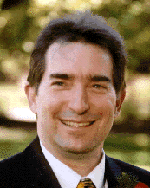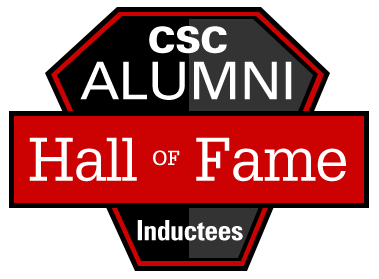 Recent
military engagements by the United States in Iraq and Afghanistan have
demonstrated first-hand the time and logistics required to move massive
quantities of troops and equipment around the globe, just to be in a position
to strike a "target of opportunity."
Recent
military engagements by the United States in Iraq and Afghanistan have
demonstrated first-hand the time and logistics required to move massive
quantities of troops and equipment around the globe, just to be in a position
to strike a "target of opportunity."
With today's advances in technology, is this really necessary? Is it possible that such targets could be struck with weapons launched here in the U.S. mainland? Could this be done with precision on a relatively small moving target half-way around the world?
Such are the questions David Porter and his team strive to answer every day. Porter, who graduated from NC State University with a B.S. in computer science in 1974, is the manager of the Missiles & Space Battle Laboratory at Lockheed Martin Space Systems Company in Sunnyvale, CA. The work he does there is of vital importance to our nation's defense.
Located in a secure area, deep in one of Lockheed Martin's silicon valley facilities, the Missiles & Space Battle Laboratory can best be described as a high tech, simulation-based acquisition laboratory, designed to provide U.S. Defense Department and key government decision makers a realistic view of weapons and defensive systems. This virtual battlefield employs simulations using distributed interactive simulation (DIS) and high level architecture (HLA) standards.
One of Porter's teams' recent projects offers an example of the types of simulations they deliver: it uses high-end, game-like virtual reality animation to demonstrate the feasibility of delivering precision guided attacks anywhere in the world in a matter of minutes. Is it possible? Yes, but Porter's simulation indicates many challenges remain to be addressed, including: How would you communicate with this swiftly moving attack to ensure that the desired target is struck if the target is also moving? How would you coordinate with other countries that the attack would pass through or pass over in this very short time span? How can the transient effects or debris that current technologies leave behind be safely managed in this time span? These are all things the decision makers must consider before they build such a system.
The simulations take concepts and blend them with actual systems throughout the design process. This constantly helps decision makers determine if this component achieves the desired result within the full system of systems. Only after a system has been proven successful in this simulation environment does it stand a chance of being fully funded and developed. It is a process that takes years, but it puts Porter on the front end of tomorrow's defense technology.
During his senior year, NC State won their first National Championship in basketball, but Porter says he paid no attention to sports at all. Porter recalls, "I vaguely remember that we were champions at basketball, only because I won a date with a young lady by betting on State to win a game in overtime. I do, however, have fond memories of being a half hour late for my German final exam because I was having too much fun 'testing' the space battle simulation for Dr. Skinner's class!"
He says he remembers the focus on projects in our curriculum and says that is a real advantage over other more theoretical based schools. He claims he wasn't the best student and even negotiated a special project to gain his degree. Ironically, he has risen to one of the most important roles imaginable in terms of helping defend our country's freedom in the future.
David lives in Mountain View, CA, with his wife Sue Lindner, who has a doctorate in linguistics, and their son. His daughter lives nearby. David and Sue enjoy playing, singing, and dancing to both Celtic and Balkan music. They also enjoy genealogy and outdoor activities.
- posted 2001 - Ken Tate-

